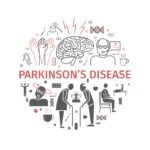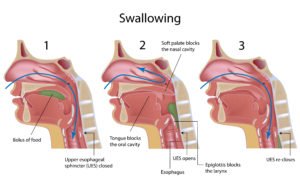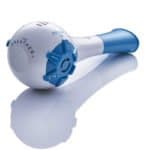3 Benefits of RMT in Parkinson’s
3 Benefits of RMT in Parkinson’s

Improved Speech

Both inspiratory (IMT) and expiratory muscle training (EMT) support consistent muscular pressure and lung volume, which are essential for speech production. Speech is produced if sufficient air volume is pushed through the vocal cords with high enough airflow to produce audible sounds. Respiratory muscle strengthening using RMT activates and exercises the hyolaryngeal complex, the muscle group required for speech production. Speech breathing, measured by vowel phonation and speech quality, also improves with combined RMT. Research shows that RMT promotes optimal speech and intelligibility necessary for better communication and QoL in people with Parkinson’s.
Efficient Swallow Function

Respiratory muscle weakness (RMW) is associated with ribcage inflexibility, decreased lung volume and weak laryngeal functions. RMT directly addresses RMW and retrains the respiratory muscles to optimize breathing and support safe swallowing. Evidence shows an increase of 27% maximal expiratory pressure (MEP) supporting deep breathing, airway defence and swallowing reflex. RMT strengthens the hyolaryngeal muscles for a conscious, efficient and coordinated breathe-swallow pattern. RMT also enhances recovery from swallow dysfunction and dysphagia and helps to enjoy food again and to stay healthy.
Effective Cough Production
Dysfunctional voluntary cough and cough reflex can often be observed in people with Parkinson’s. The coughing mechanism is essential to support the coordinated breathe-swallow pattern, to prevent penetration/AP and to facilitate airway protection. Strengthening of the expiratory muscles (EMT) promotes the breathe-swallow-cough mechanism by activating the hyolaryngeal complex in the upper airway. These accessory muscles play essential roles in phonation, airway defence, ventilation and expectoration. Strengthening of the inspiratory muscles (IMT), on the other hand, ensures that enough lung volume and airflow are available for the pattern timing and coordination.
Clinical evidence shows that RMT supports cough function that strengthens the cough reflex necessary for pulmonary hygiene and airway clearance. RMT also improves effective cough production in PD patients by increasing cough volume acceleration, therefore, leading to a decreased risk of aspiration.
Conclusion
It is a priority to address RMW in people with Parkinson’s, as it is the underlying cause for several symptoms. Evidence shows that RMT can effectively address RMW in PD patients, promoting safe swallowing, improved speech and voice production, and increased quality of life. RMT using the Breather can help people with Parkinson’s to improve respiratory, speech and swallow function, which can help to reduce social isolation and contribute to a more positive outlook on life.
Recommendation

